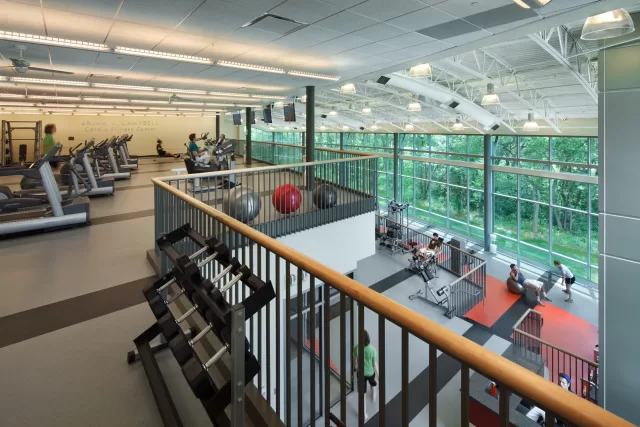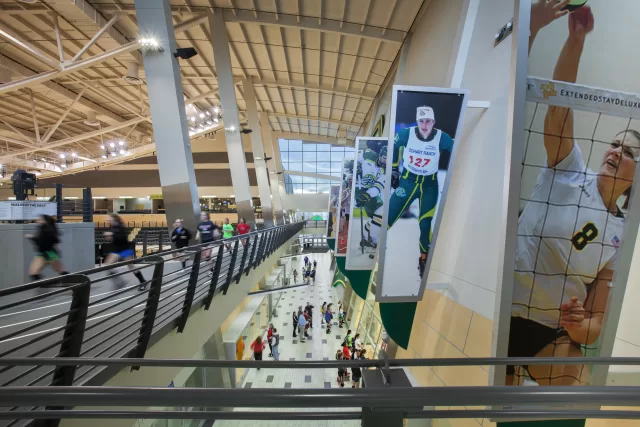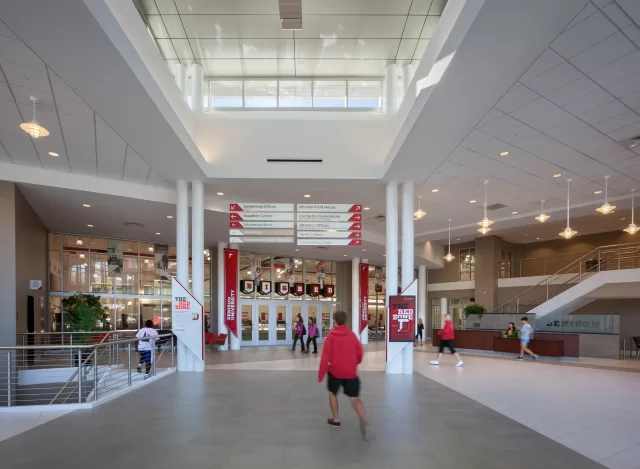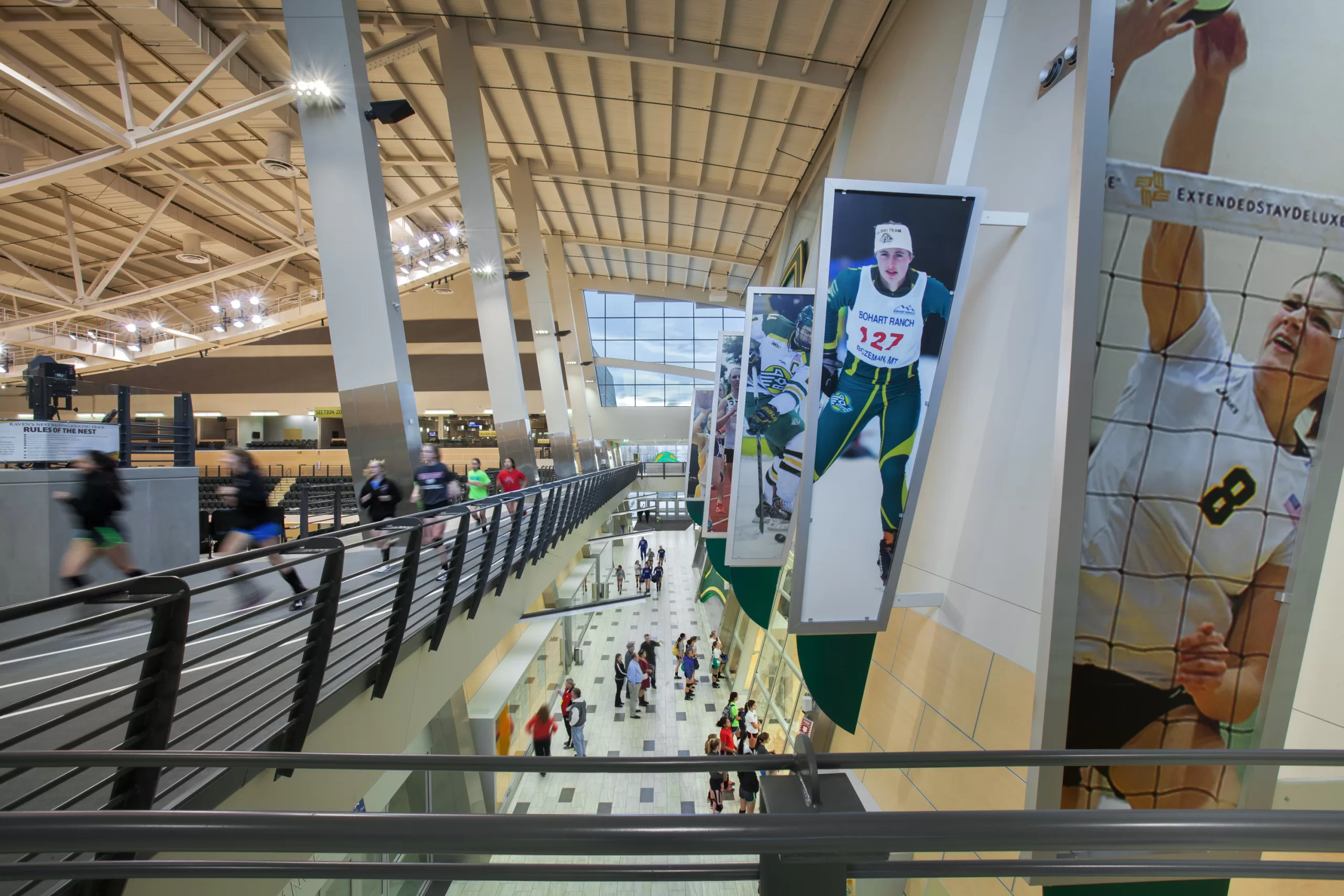Designing Tomorrow’s Gym:
Innovation and Inclusion in University Gymnasium Renovation
In an era where college campuses are competing not just on academics but on the holistic experience they provide, university gymnasiums are being reimagined as more than just places to shoot hoops or run laps. These are now the crossroads of wellness, community, and school spirit—dynamic hubs where athletics, recreation, wellness, and identity intersect. But with so many stakeholders—varsity athletes, recreational users, academic programs, faculty, and community partners—how do we ensure these spaces serve everyone without becoming so multipurpose that they serve no one?
As designers for Gen Z and their followers, we’ve tackled that challenge head-on. Our experience designing and renovating hybrid university gymnasium facilities across the country has shown us one thing: shared doesn’t have to mean compromised. With careful planning, bold thinking, and smart flexibility, these spaces can become the heartbeat of campus life.



Trend 1: Designing for Simultaneous Use Without Compromise
Gone are the days of single-use gyms and rigid schedules. Today’s gymnasiums are expected to host intramurals, varsity strength training, kinesiology labs, open rec time, and sometimes even academic lectures—all in the same day. Our approach starts with understanding these overlaps through semester-based scheduling simulations and user group engagement. We often separate high-demand fitness equipment types by zone or floor—like mezzanines dedicated to cardio—to support coexistence.
Take Columbia Basin College’s hybrid facility: by building a shared-use schedule and allowing for zones of concurrent use, we delivered a solution that honored the needs of every user group.
Trend 2: Campus Wellness is Holistic, Not Just Physical
University recreation centers are now wellness centers in disguise. From mental health counseling and meditation rooms to dietician consults and biometric testing, these gyms are pivoting toward holistic student health. The University of Alaska Anchorage’s Alaska Airlines Center illustrates this perfectly. Its concourse doubles as a walking track and wellness loop, integrating fitness with mental reprieve and community connection.
Trend 3: Safety, Without Sacrificing Openness
Today’s students demand access—but not at the expense of safety. The best-designed gymnasiums balance both. At Denison University, we designed a single-point entry with visual control over all major access points, creating security through smart sightlines and spatial clarity. At the University of Wisconsin–River Falls’ Falcon Center, we employed varied access strategies—from card readers to push-button locker controls—tailored to specific users and activities.
Creating a “free-zone” concourse is one of our go-to strategies, enabling events to proceed while securely routing day-to-day student use.
Socialization is the New Cardio
Today’s students want more than machines and courts—they want connection. Recreation centers have become social incubators, offering spaces for clubs, coffee breaks, collaborative study, and digital hangouts. At the University of Utah Student Life Center, student involvement shaped a facility that doesn’t just serve physical needs—it cultivates belonging. Its informal lounge zones, club meeting areas, and “play-first” philosophy have made it a true lifestyle hub.
Trend 5: Flexibility is the Foundation of Longevity
Whether it’s accommodating emerging sports (hello, Esports) or converting a gymnasium into a vaccination center during a pandemic, flexibility is the future. We incorporate multipurpose activity courts (MACs), raised rooflines, and modular furniture systems to extend usability for decades. At DePauw University, we designed the Lilly Athletic and Recreation Center’s natatorium roof to accommodate a future gym relocation—saving them both cost and complexity when expansion time arrives.
Emerging Trends to Watch:
- DEI in Design: Gender-inclusive locker rooms, sensory rooms for neurodivergent users, and culturally responsive wellness programs are becoming baseline expectations.
- Digital Fitness Integration: Smart mirrors, streaming classes, wearable tracking integration, and facility-use analytics help personalize and optimize the fitness journey.
- Sustainability & Net-Zero Goals: From low-VOC materials to solar-ready roofs and efficient HVAC systems, sustainability is a non-negotiable part of campus pride and performance.
- Esports & Gamification: Competitive and casual gaming spaces are entering the rec center footprint, often as social and recruitment tools for the next generation of students.
- Bottom Line: Purpose-Built, People-Driven
University gymnasiums must walk a fine line: athletic yet inclusive, secure yet open, active yet restorative. They must serve students today while being ready for unknowns tomorrow. At Hastings+Chivetta and GHC Orcutt | Winslow, our hybrid gymnasium designs are built with both head and heart—infused with strategy, innovation, and the lived voices of the communities they serve.

